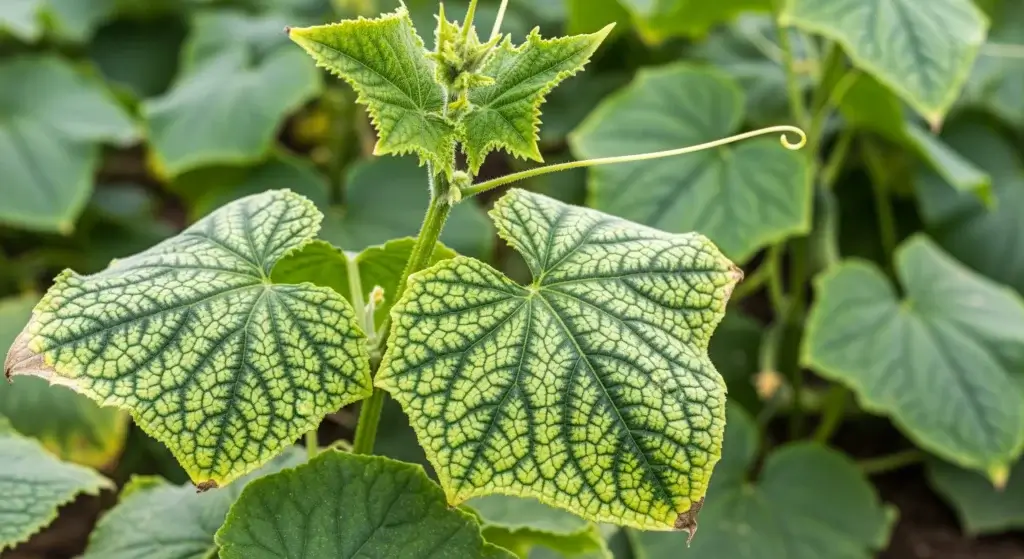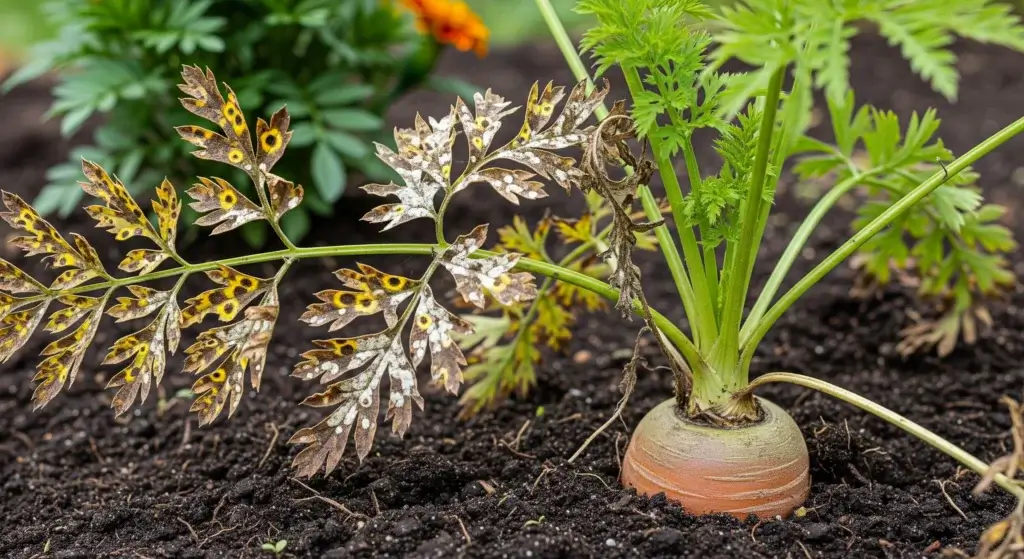
Whiteflies can be a persistent nuisance for plant enthusiasts, causing damage to leaves and impacting the overall health of plants.
Neem oil, derived from the seeds of the neem tree (Azadirachta indica), has gained popularity as a natural and effective solution for controlling whitefly infestations.
In this guide, we will explore the step-by-step process of using neem oil to combat whiteflies, different application methods, tips for optimizing effectiveness, and safety precautions to ensure the well-being of your plants, yourself, and your pets.
What Are The Benefits of Using Neem Oil For Whitefly Control
Neem oil is a natural and effective solution for controlling whitefly infestations.
Here are some of the benefits of using neem oil for whitefly control:
- Read also: Fungus Gnats: Power of Cinnamon for Effective Control
- Read also: A Guide to Whitefly Control on Vegetables
Effective against many bugs
Neem oil stands out as an effective solution for battling an array of pests, including troublesome whiteflies, aphids, and spider mites.
The mechanism involves disrupting the reproductive cycles of these insects, hindering their feeding habits, and suffocating them upon contact.
Eco-friendly solution
Derived from the seeds of the neem tree, neem oil is a natural and environmentally friendly alternative for tackling whitefly infestations.
As opposed to chemical pesticides, neem oil poses minimal harm to the ecosystem, making it a sustainable and ecologically responsible choice for gardeners and farmers alike.
Prevents fungal diseases
Neem oil doesn’t just stop at repelling insects; it also acts as a formidable defense against fungal diseases.
By applying neem oil, you create a protective shield that prevents the onset of mildew, rust, leaf spots, and black spots on your plants
Safe for pets and wildlife
A significant advantage of neem oil is its safety around pets and wildlife.
Unlike certain chemical pesticides that may pose risks to beneficial insects and animals, neem oil provides an effective solution without causing harm to non-target species.
Controls insects at all stages of development
Neem oil doesn’t discriminate when it comes to insect control; it targets pests at every stage of their development. This includes adults, larvae, and even the eggs.
This comprehensive approach ensures that neem oil is not only a reactive solution but a proactive one, effectively eliminating over 200 species of insects.

Step-by-Step Guide: Mixing Neem Oil for Whitefly
To create a neem oil solution for whitefly control, follow these simple steps:
Dilution
Begin by measuring 5-10ml of neem oil per liter of water.
The exact amount may vary based on the concentration of the active ingredient in the neem oil product you’re using.
Refer to the product instructions for precise measurements.
This careful dilution ensures that the neem oil is potent enough to combat whiteflies while avoiding any risk of plant damage.
Emulsification
Neem oil is naturally hydrophobic, meaning it doesn’t mix well with water.
To address this, add an emulsifier to the neem oil and water mixture.
An emulsifier helps break down the oil into smaller particles, facilitating thorough mixing and dispersion in the water.
This step is crucial to create a homogeneous solution that will effectively coat and treat the plant surfaces.
Shaking
Transfer the neem oil and water mixture, now with the added emulsifier, into a spray bottle.
Shake the bottle vigorously to ensure the neem oil is evenly distributed in the water.
Proper shaking guarantees that the neem oil solution maintains its stability and effectiveness.
This evenly mixed solution is essential for achieving consistent coverage on plant surfaces, enhancing the efficacy of whitefly control.

Different Application Methods
Neem oil can be applied to plants using various methods, including spraying, wiping, and soil drenching.
Spraying
Spraying is one of the most common and efficient ways to apply neem oil to plants.
Fill a spray bottle with the neem oil solution and ensure it is properly diluted as per the product instructions.
Spray the solution onto both the top and bottom surfaces of the plant’s leaves, covering them thoroughly.
This method allows the neem oil to coat the leaves, creating a protective barrier against whiteflies and other pests.
Wiping
For smaller plants or those with delicate foliage, wiping is a gentle alternative to spraying.
Dip a soft cloth or sponge into the neem oil solution and carefully wipe the leaves, ensuring even coverage.
This method is ideal for plants that may be sensitive to direct spraying or for targeting specific areas of infestation.
Wiping allows for precise application while minimizing potential damage to the plant.
Soil drenching
Soil drenching is a method used to target whiteflies at the larval stage that may be present in the soil.
Prepare the neem oil solution as directed and pour it directly into the soil around the base of the plant.
As the solution seeps into the soil, it reaches the roots and disrupts the life cycle of whitefly larvae.
Soil drenching is particularly effective for controlling whiteflies in the soil and preventing their emergence as adult pests.
Systemic treatment
Neem oil can also be applied as a systemic treatment by mixing it with water and applying it to the soil.
The plant absorbs the neem oil through its roots, allowing it to circulate throughout the plant’s vascular system.
This systemic approach provides long-lasting protection against whiteflies and other pests, as the neem oil is distributed internally within the plant.
Foliar feeding
Additionally, neem oil can serve as a foliar feed when mixed with water and applied directly to the leaves.
This method not only helps control pests but also provides essential nutrients to the plant through the absorption of neem oil.
Foliar feeding can promote overall plant health and vigor while simultaneously combating whitefly infestations.

Tips for Optimizing Effectiveness
To maximize the effectiveness of neem oil for whitefly control, consider the following tips:
Timing applications
Choose the right time for neem oil applications to enhance effectiveness.
Opt for the early morning or late afternoon when the sun is not too harsh.
Applying neem oil during these periods prevents direct sunlight from causing rapid evaporation, allowing the oil to adhere to the plant surfaces for a more extended period.
This ensures better absorption and efficacy against whiteflies.
Ensuring thorough coverage
Whiteflies often gather on the undersides of leaves, making it crucial to pay special attention to these areas during neem oil application.
Use a fine spray to thoroughly cover both the upper and lower leaf surfaces, ensuring that the neem oil solution reaches all parts of the plant.
Adequate coverage is essential for creating a protective barrier that disrupts whitefly feeding and inhibits its ability to lay eggs.
Repeating as needed
For effective control, especially in the case of severe whitefly infestations, it’s essential to establish a consistent application routine.
Repeat neem oil applications every 7-14 days.
This frequency aligns with the whitefly life cycle, ensuring that the neem oil disrupts various stages, from eggs to adults.
The regular application breaks the life cycle and helps achieve long-term control, preventing whitefly resurgence.
Addressing multiple life stages
Neem oil’s effectiveness extends across various whitefly life stages, including eggs, larvae, and adults.
Tailor your application strategy to target all these stages, addressing the entire life cycle comprehensively.
This approach ensures that whiteflies are not only repelled but also inhibited at different developmental phases, preventing their population from rebounding.
Combining with other pest control methods
Enhance the overall effectiveness of neem oil by incorporating it into an integrated pest management (IPM) strategy.
Combine neem oil treatments with other pest control methods, such as introducing natural predators like ladybugs or parasitic wasps, to create a holistic approach.
Regular monitoring
Stay vigilant and monitor your plants regularly for any signs of whitefly activity.
Early detection allows for prompt neem oil application, preventing the infestation from reaching severe levels.
Regular monitoring also enables you to adjust your control measures based on the specific needs of your plants and the prevailing environmental conditions.

Safety and Precautions
Neem oil is generally considered safe for humans, pets, and beneficial insects when used as directed.
However, it’s essential to observe the following safety precautions:
Skin contact
While neem oil is considered safe, it’s advisable to avoid direct skin contact with concentrated neem oil.
When handling the neem oil solution, wear protective gloves to prevent any potential irritation.
Ingestion
Neem oil is not meant for ingestion, and it’s imperative to keep the product out of reach of children and pets.
Store neem oil in a secure location, ideally in its original container with a tightly sealed lid.
Beneficial insects
Neem oil, while targeting pests like whiteflies, may have an impact on beneficial insects, such as bees and ladybugs.
To minimize this impact, avoid applying neem oil to plants during their blooming period or when beneficial insects are actively foraging.
Dilution accuracy
When preparing the neem oil solution, follow the recommended dilution ratios provided on the product label.
Accurate dilution ensures the effectiveness of the solution while minimizing any potential adverse effects on plants or the surrounding environment.
Allergies and sensitivities
Individuals with known allergies or sensitivities should exercise caution when using neem oil.
If you have a history of allergic reactions to similar products, perform a patch test before extensive use.
Environmental considerations
Be mindful of the environmental impact when using neem oil.
Avoid excessive application and runoff into water sources.
Follow responsible application practices to minimize any potential ecological effects.

- Read also: Effective Aphid Control Strategies for Indoor Plants
- Read also: Ladybugs for Effective Aphid Control
Conclusion
Effectively managing whitefly infestations and safeguarding the health of your plants is achievable with the use of neem oil—a natural and eco-friendly solution.
By adhering to the step-by-step guide, employing diverse application methods, and heeding safety precautions, you can ensure optimal control of whiteflies, whether on your indoor or outdoor plants.
Neem oil proves to be a responsible choice for pest control, contributing to the overall well-being and vitality of your cherished greenery.
FAQs
When used as directed, neem oil is considered safe for humans and pets. However, it’s essential to avoid direct skin contact with concentrated neem oil and store it out of reach of children and pets.
While neem oil is an effective natural solution, it may cause temporary leaf burn on some plant species. Additionally, it’s important to avoid applying neem oil to plants in direct sunlight to prevent excessive evaporation.



